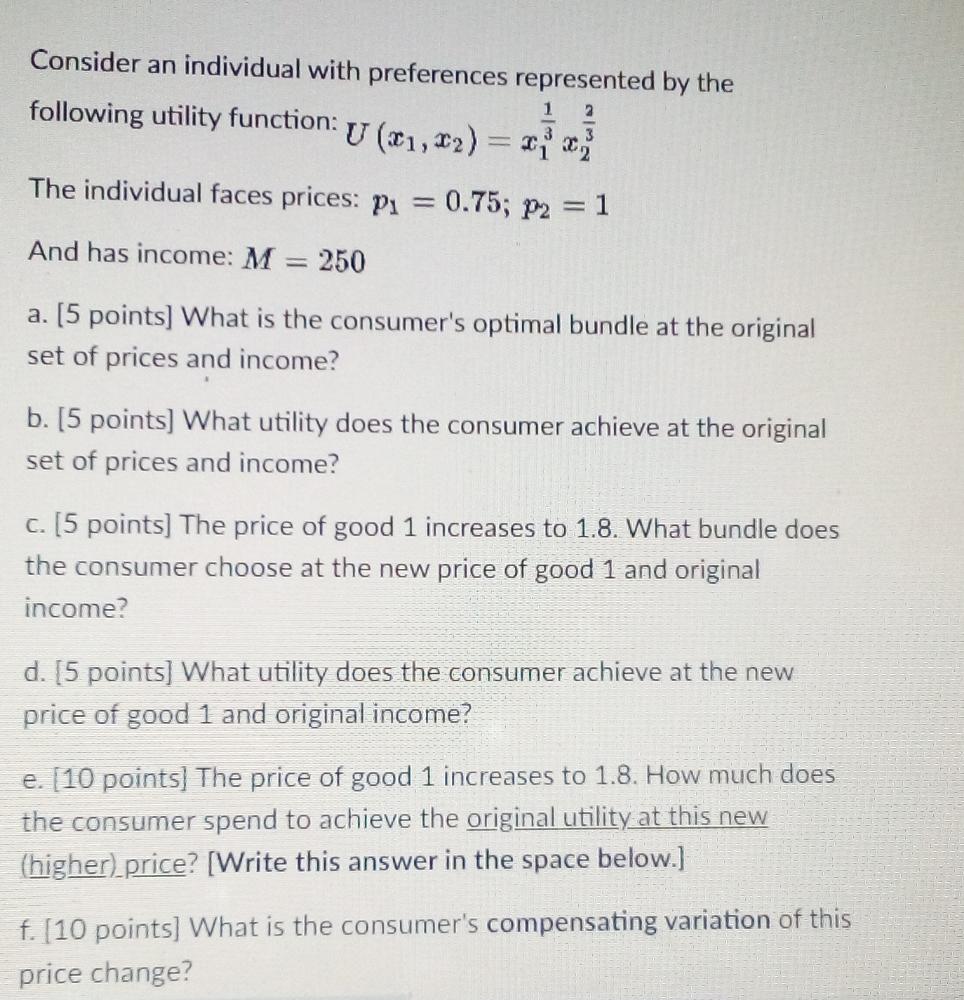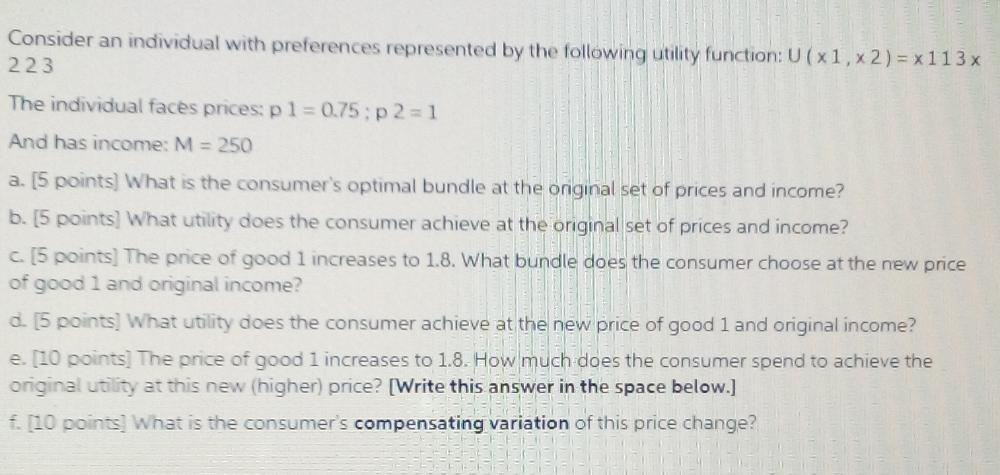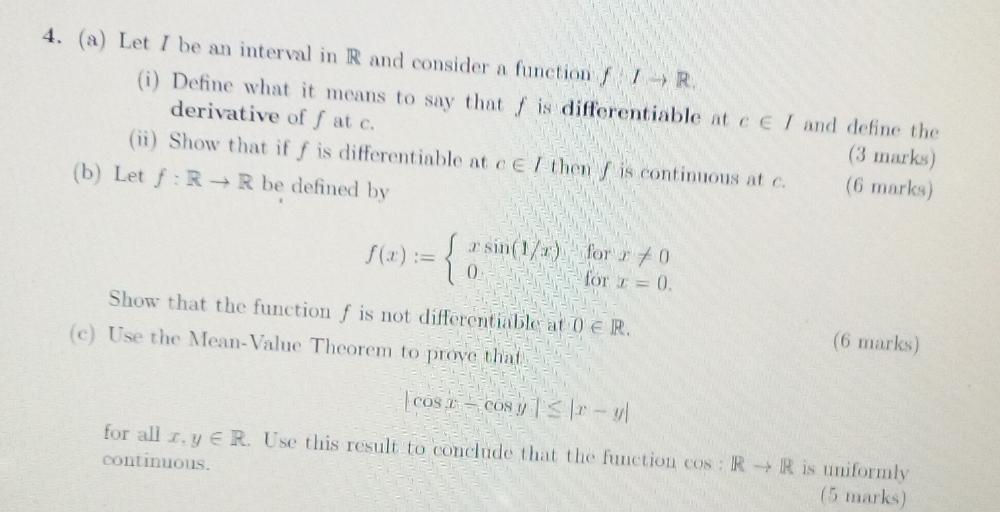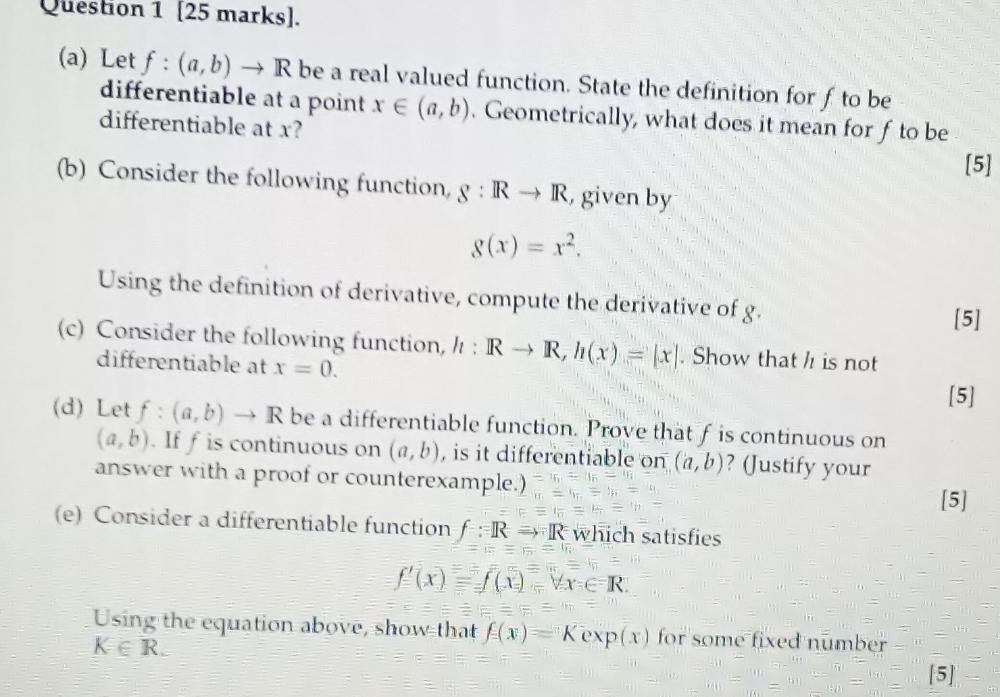



Kindly give out correct solutions
Consider an individual with preferences represented by the following utility function: U (x1, 12) = 0; 2, 2 The individual faces prices: p1 = 0.75; p2 = 1 And has income: M = 250 a. [5 points] What is the consumer's optimal bundle at the original set of prices and income? b. [5 points] What utility does the consumer achieve at the original set of prices and income? c. [5 points] The price of good 1 increases to 1.8. What bundle does the consumer choose at the new price of good 1 and original income? d. [5 points] What utility does the consumer achieve at the new price of good 1 and original income? e. [10 points] The price of good 1 increases to 1.8. How much does the consumer spend to achieve the original utility at this new (higher).price? [Write this answer in the space below.] f. [10 points] What is the consumer's compensating variation of this price change?Consider an individual with preferences represented by the following utility function: U ( x 1, x 2) = x113x 223 The individual faces prices: p 1 = 0.75 ; p 2 = 1 And has income: M = 250 a. [5 points) What is the consumer's optimal bundle at the original set of prices and income? b. [5 points] What utility does the consumer achieve at the original set of prices and income? c. [5 points] The price of good 1 increases to 1.8. What bundle does the consumer choose at the new price of good 1 and original income? d. [5 points] What utility does the consumer achieve at the new price of good 1 and original income? e. [10 points] The price of good 1 increases to 1.8. How much does the consumer spend to achieve the original utility at this new (higher) price? [Write this answer in the space below.] f. [10 points] What is the consumer's compensating variation of this price change?4. (a) Let / be an interval in R and consider a function / / - R. (i) Define what it means to say that f is differentiable at c E I and define the derivative of f at c. (3 marks) (ii) Show that if f is differentiable at ce / then f is continuous at c. (6 marks) (b) Let f : R - R be defined by sin(1/)fore / 0 0 for 1 = 0. Show that the function f is not differentiable at be R. (6 marks) (c) Use the Mean-Value Theorem to prove that for all r. y E R. Use this result to conclude that the function cos : R - R is uniformly continuous. (5 marks)Question 1 [25 marks]. (a) Let f : (a, b) - R be a real valued function. State the definition for f to be differentiable at a point x E (a, b). Geometrically, what does it mean for f to be differentiable at x? [5] (b) Consider the following function, g : IR - IR, given by 8 (x) = 12. Using the definition of derivative, compute the derivative of g. [5] (c) Consider the following function, h : IR - R, h(x) = [x). Show that h is not differentiable at x = 0. [5] (d) Let f : (a, b) - R be a differentiable function. Prove that f is continuous on (a, b). If f is continuous on (a, b), is it differentiable on (a, b)? (Justify your answer with a proof or counterexample.) [5] (e) Consider a differentiable function f : R = R which satisfies Using the equation above, show that f(x) Kexp(v) for some fixed number KER














